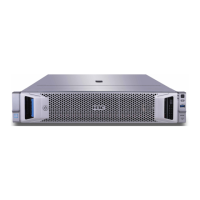36
8. Click the icon for a management network, service network (optional), storage back-end
network, and storage front-end network to specify a physical interface for them, and then click
OK.
9. Configure the following parameters and then click OK:
{ LAGG Mode—Select the aggregation mode of physical NICs in the management network.
Options include Static and Dynamic. The physical switch must be enabled with LACP if the
dynamic LAGG mode is used. This parameter is displayed only when multiple physical
interfaces are configured for the management network.
{ LB Mode—Select the load balancing mode of physical NICs in the management network.
Options include Advanced, Basic, and Active/Standby. This parameter is displayed only
when multiple physical interfaces are configured for the management network.
− Advanced—Load balances physical NICs based on the Ethernet type, IP protocol,
source IP address, destination IP address, source port number, and destination port
number of packets.
− Basic—Load balances physical NICs based on the source MAC address and VLAN tag
of packets.
− Active/Standby—Load balances the active and standby physical NICs. When the
active physical NIC fails, the system switches to the standby physical NIC for traffic
forwarding. This option is displayed only when the static LAGG mode is used.
Figure 42 Selecting physical interfaces
10. Click OK.
11. Click Set Password on the Network page as shown in Figure 40.
12. Set the root password for al
l hosts and then click OK. The password must contain a minimum of
eight characters. It cannot contain only letters, digits, or special characters.

